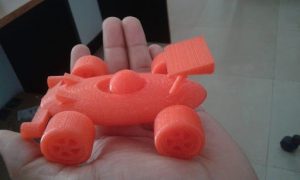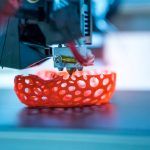
Wondering how to design a prototype economically? It’s high time you paid attention to the concept of 3D printing and even considered it to be one solution for cost-effective prototyping.
About Vacuum Casting
Vacuum Casting is a copying technique that facilitates the production of smaller sections or series of functional plastic parts. Experts at Nexgen3d believe that because it accelerates the production process of high-quality prototypes or end-user products, it is one of the best technology to be used for production and development.
In other words, vacuum casting is a versatile technique that makes use of a vacuum and draws liquid to the mold, fostering the creation of a model.
Situations When You Use Vacuum Casting For Manufacturing Products
With Vacuum Casting, you can easily create, replace, or replicate engineering polymers for the creation of prototypes or end-user parts.
The process is employed in cases where:
- Air entrapment appears to be a problem,
- There exists complicated details or undercuts, and
- If the material is either a fiber or a reinforced wire.
Creation of the Model Using the Method of Vacuum Casting
The formation of the 3D model using the concept of Vacuum casting undertakes several steps. Fact that it renders high-quality products at an affordable cost, more and more organizations like Nexgen3d are pouncing upon the technology.

1. Design the Model
To begin with the creation of the model, it is important to have an appropriate or perfect master model which would be used to create the replica.
Note that: If the master model possesses any flaws, the final product would then suffer. We pay huge attention when executing this phase.
2. Curing the Mold
The technique used a vacuum to draw the replica. Once the process has been executed and the model is ready, the same is then encapsulated within a twofold silicone mold. The object is then pressed under high temperature ensuring that the silicone mold sticks strongly.
3. Filling Resin
After the curing process, the item is then cut open in a way that reveals the center and the hollow space which is of the exact dimension as that of the master model. The next process involves slicing down the mold in half. The two are then placed in the vacuum chamber to fill the designated resin material (which possesses similar characteristics as that of industrial materials).
4. Treating Mold
The material here is combined with a coloring pigment to attain significant aesthetic or functional properties. Once the mold has been filled with the resin material, it is then placed in the vacuum chamber ensuring no bubbles enter the same. Now they are kept in the oven to achieve the final cured stage. Here, the mold is finally treated or pressed under high temperatures, making the object durable.
With this the prototype is ready and now can be used to make many more replicas. Nexgen3d has made an array of prototypes using the method. The removed prototype can be decorated and adorned to give it an appealing and attractive look.
Why Choose Vacuum Casting?
Knowing what the technology is and how the same works, the next question to garner attention is why we choose vacuum casting for 3D printing or prototyping. When we talk about the advantages of the technique, the first thing that appears is its feature of duplicating products. For one, it ensures that the created one is the same as that of the existing one and secondly, they are of optimal quality.
No matter how complex the original structure was, the newly replicated wears the same dimension with maximum precision. With vacuum casting, flexibility, hardness, and rigidity stand as the core properties of the prototype.
Secondly, the cost of production is less as compared to the traditional ways of building a prototype. Even though you need to spend a considerable amount on possessing the equipment, the overall process facilitates creation at a lesser price.
Also, the quantity of products produced in a given period is more. Meaning that the process is fast and cost-effective, together with which contributes to the production of efficient products in minimal time.
Role of Nexgen3d in Vacuum Casting
We at Nexgen3d aim at tapping into the potential of the technology. With excellent quality products and experienced engineers, we adopt people’s first approach to building products in the least possible time.



